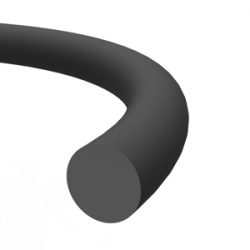What is Rubber Shrinkage?
What you need to know about Rubber Shrinkage
The calculation of O Ring squeeze is one of the main elements to take into consideration when designing a seal for a particular application. This is because the amount of O Ring by the media can have an impact on the design, material selection, and other important features.
O Ring Squeeze – What is it?
It is the ring deformation when under pressure. The function of an O Ring is to prevent leakage from the installation. Nearly every groove has a diametrical gap, which is a small gap between two mating surfaces. This indicates that the O Ring’s cross-sectional height needs to be larger than the weight of the groove. An efficient O Ring will expand and be squeezed into the gap space.
What’s the ultimate amount of squeeze?
The O Ring size and the type of installation for an O Ring need to be taken under consideration to get the accurate amount of compression for the best sealing performance. In a dynamic installation, less squeeze is better, it will lessen abrasion and wear on the O Ring. In applications where there is no stress or little stress used on the O Ring, its natural elastomeric features will block liquids from getting through. A significant amount of squeeze is needed to stop passage through hardware for installations, in which gasses need to be confined.
You should not always initiate a high level of a squeeze to tighten the seal. A squeeze is something that should be optimised for a particular application rather than maximised.
More doesn’t mean better
The greater the compression, the bigger the force between the mating hardware and the O Ring. Increase in force doesn’t mean it will do a better job in stopping gas, liquid or powders from leaking through the seal. A powerful squeeze is advisable for an effective seal; however, it is not always necessarily better. The more force is applied on the O Ring in an application, the more risk there is of initiating a pinch which will result in a route for leaks. Another potential damage risk is when the force of squeeze grows speedily, therefore a rise in squeeze can result in uncontrolled stresses on the equipment. The higher the squeeze, the greater the force, the faster the wear.
To conclude
There isn’t a set rule for the amount of compression you need to initiate on the O Ring. Generally, a typical compression percentage for hydraulic applications is between 13% – 27%, and for pneumatic applications is between 10% – 24%. These numbers vary depending on the material used in the application, environmental influences and the temperature of the application.
If you require additional information about our range of products, and/or services, please contact a member of the team.
E & OE. M Barnwell Services endeavour to make sure that all content is correct. Manufacturing partners have provided this information.
